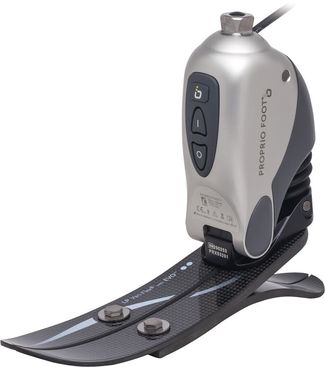Brain Controlled Bionic Legs Are Here
|Now, at age 48, Olafsson can move his right ankle by thinking about it. When the electrical impulse from his brain reaches the base of his leg, a pair of sensors embedded in his muscle tissue connect the neural dots, and wirelessly transmit that signal to the Proprio Foot. Since the command reaches the foot before the wearer’s residual muscles actually contract, there’s no unnatural lag between intention and action.
This is a bigger breakthrough in the field of robotics and advanced prosthetics than it might appear. Brain-controlled bionic limbs make headlines on a regular basis, with the implication that the science has been solved, and experimental systems are already transitioning to products. But most of those devices are confined to laboratories, and many require complex surgery, such as transplanting muscle tissue or implanting electrodes in a subject’s brain.
Ossur’s sensor-linked limbs, meanwhile, have stood up to the abuses of everyday activity in Iceland and England (where Olafsson now lives). During the 14-month testing period, the company’s two “first-in-man” subjects have worn the devices as their sole prostheses. Ossur checks the equipment and collects data, but the limbs are theirs. And the surgery to implant the sensors was minimal. According to Thorvaldur Ingvarsson, an orthopedic surgeon and head of R&D at Ossur, the procedure took 15 minutes, and each sensor required a single-centimeter-long incision. The tiny sensors (3 millimeters-by-80 millimeters) are powered by magnetic coils embedded in the socket – the cushioned, hollow component that fits over a user’s residual limb, and connects to the prosthesis. Since there are no integrated batteries to deal with, there’s no need to replace the sensors (unless they fail for other reasons). “We believe this is a lifelong sensor,” says Ingvarsson.
